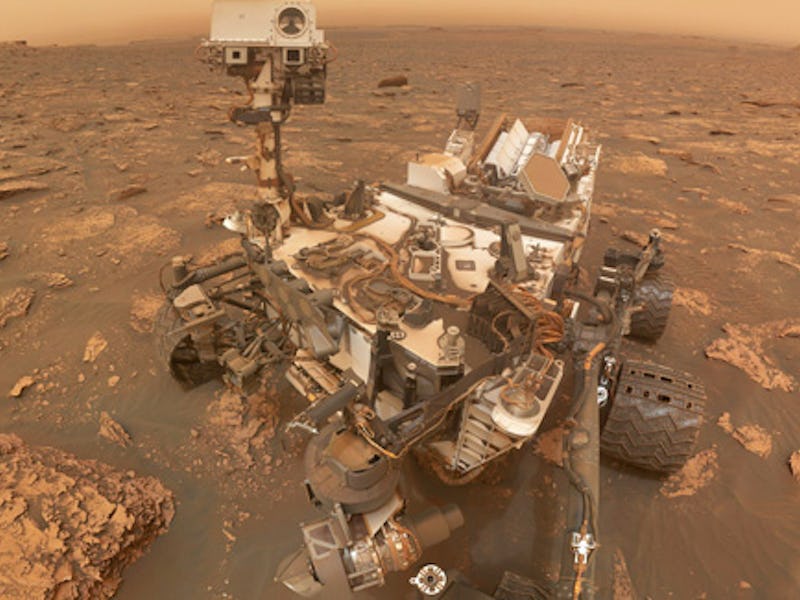NASA's Curiosity Rover Detects Unusual Cloud of Methane on Mars That Could Mean Life
The key to this is that methane comes from farts, so who – or what – let one rip on the Red Planet?

From Edgar Rice Burroughs’ John Carter of Mars and H.G. Wells’ The War of the Worlds to Ray Bradbury’s The Martian Chronicles all the way to the present day with movies like Mars Attacks! and Mission to Mars, both sci-fi writers and scientists have long held a fascination with our nearest planetary neighbor. Especially when it comes down to the notion of whether life exists there.
This obsession took a new twist last week when measurements taken by NASA’s Curiosity rover discovered surprisingly high amounts of methane in the Martian air, a gas that on Earth is usually produced by organic life, as…er, a by-product of digestion.
Curiosity is currently trundling about in the massive Gale Crater that's 96 miles in diameter
The actual amount might sounds small – about 21 parts per billion units by volume (ppbv), but it’s much more than really should be there. Methane is significant because sunlight and chemical reactions would break up the molecules within a few hundred years. Therefore any methane detected now must have been released recently.
The finding came from the rover’s Sample Analysis at Mars (SAM) tunable laser spectrometer. It’s exciting because microbial life is an important source of methane on Earth…however, methane can also be created through interactions between rocks and water.
News of this discovery was only officially released yesterday after a story was leaked to The New York Times, and no one at NASA was prepared to offer any further comment until additional research was undertaken.
Nice planet. We'll take it! The Martians in 'Mars Attacks!' were hell-bent on destroying the Earth
“It’s as much as we have right now,” Alana Johnson, NASA Senior Communications Specialist told Inverse. “The team will need more time to go over their data before we can share more.”
Curiosity doesn’t have instruments that can definitively say what the source of the methane is, or even if it’s coming from a local source within Gale Crater or elsewhere on the planet.
“With our current measurements, we have no way of telling if the methane source is biology or geology, or even ancient or modern,” Paul Mahaffy, SAM Principal Investigator of NASA’s Goddard Spaceflight Center, said in a statement.
Jump Virginia! Mars was known as Barsoom to the indigenous population in the underrated 'John Carter of Mars'
The Curiosity team has detected methane many times over the course of the mission. Previous papers have documented how background levels of the gas seem to rise and fall seasonally. They’ve also noted sudden spikes of methane, but the science team knows very little about how long these transient plumes last or why they’re different from the seasonal patterns.
The SAM team organized a different experiment for this weekend to gather more information on what might be a transient plume. Whatever they find – even if it’s an absence of methane – will add context to the recent measurement.
Finally, Martians that don't want to wipe out humanity in 'Mission to Mars'
Curiosity’s scientists need time to analyze these clues and conduct many more methane observations. They also need time to collaborate with other science teams, including those with the European Space Agency’s Trace Gas Orbiter, which has been in its science orbit for a little over a year without detecting any methane.
Combining observations from the surface and from orbit could help scientists locate sources of the gas on the planet and understand how long it lasts in the Martian atmosphere. That might explain why the Trace Gas Orbiter’s and Curiosity’s methane observations have been so different.